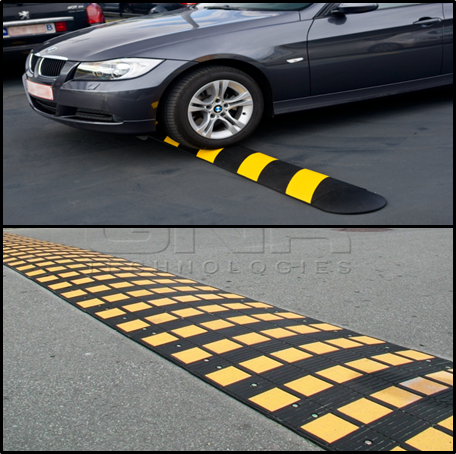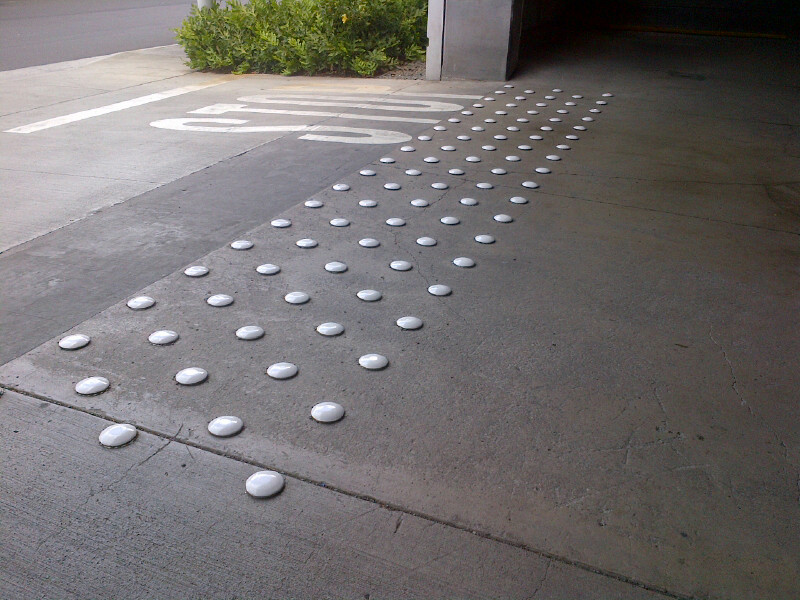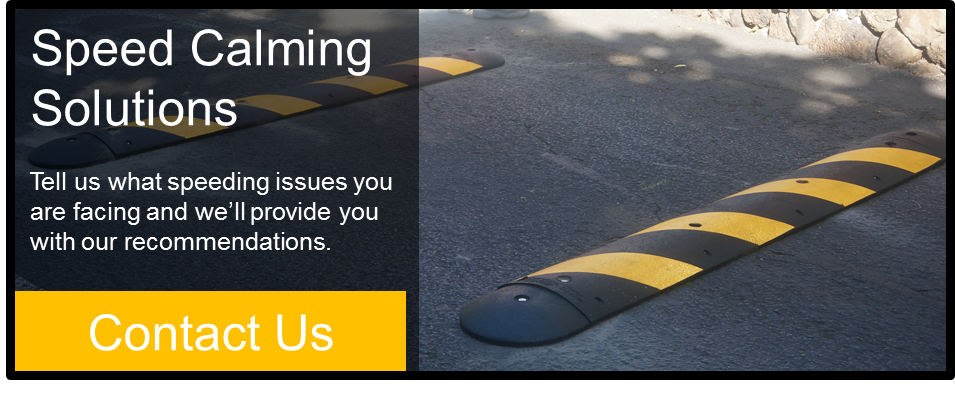By Scott Lai
 Both speed bumps and speed humps are used to reduce vehicle speeds in parking lots and garages. However, each is designed for a specific purpose. If your goal is to slow vehicles to a halt, you want a speed bump. On the other hand, if you simply want to slow vehciels but allow continuous traffic flow, you'd want to install a speed hump.
Both speed bumps and speed humps are used to reduce vehicle speeds in parking lots and garages. However, each is designed for a specific purpose. If your goal is to slow vehicles to a halt, you want a speed bump. On the other hand, if you simply want to slow vehciels but allow continuous traffic flow, you'd want to install a speed hump.
Speed Bumps
Speed bumps are designed to reduce vehicle speeds to about 2-5 miles per hour. The goal is to slow vehicles down to a minimum or even to a halt. It’s an aggressive approach to reduce speeding. If your parking lot or facility has issues with motorists ignoring STOP signs, placing a speed bump before the STOP sign can be a very effective solution to enforce a motorist to stop. Speed bumps are normally installed eight feet before a STOP bar.
Speed Humps
Speed humps, on the other hand, are designed to reduce vehicle speeds to about 10-15 miles per hour. If you want to slow vehicles down but still allow for continuous traffic, speed humps provide a "softer" approach to reducing vehicle speed than speed bumps.
Bonus Alternative

An "outside-the-box" alternative to reducing speed that I've come across is pavement markers. Normally, pavement markers are used to delinate traffic on roads. However, one customer had a unique idea to replace a speed bump with rows of pavement markers to create a type of "rumble strip" before exiting their parking garage.
 Scott is an Outside Sales Representative of G P Roadway Solutions. As a former property manager, Scott now helps other property managers improve the safety of their properties and facilities. Connect with Scott on LinkedIn.
Scott is an Outside Sales Representative of G P Roadway Solutions. As a former property manager, Scott now helps other property managers improve the safety of their properties and facilities. Connect with Scott on LinkedIn.

